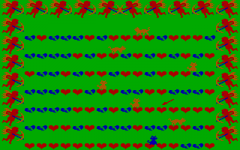Great Hierophant
Veteran Member
Is there any kind of picture viewer software that could display a CGA, Tandy or EGA screenshot from a program as it would have been seen if the software had been run on the system?
Suppose I take a screenshot in DOSBox, which outputs to the PNG format. The program DOSBox is running uses a 4-color 320x200 CGA mode. I would like to display that screenshot on my IBM PC with a real CGA card, just as if I had run the program on the PC. Is there any viewer program that could display the screenshot? To what format would I need to convert the screenshot? Ideally I would like to see any conversion be lossless. Hopefully the program would allow me to display the screenshot in full screen. Similarly, what about 16-color adapters like Tandy, PCjr. or EGA? Do programs exist for them that allow them to display a 320x200 16-color screenshot?
Suppose I take a screenshot in DOSBox, which outputs to the PNG format. The program DOSBox is running uses a 4-color 320x200 CGA mode. I would like to display that screenshot on my IBM PC with a real CGA card, just as if I had run the program on the PC. Is there any viewer program that could display the screenshot? To what format would I need to convert the screenshot? Ideally I would like to see any conversion be lossless. Hopefully the program would allow me to display the screenshot in full screen. Similarly, what about 16-color adapters like Tandy, PCjr. or EGA? Do programs exist for them that allow them to display a 320x200 16-color screenshot?

